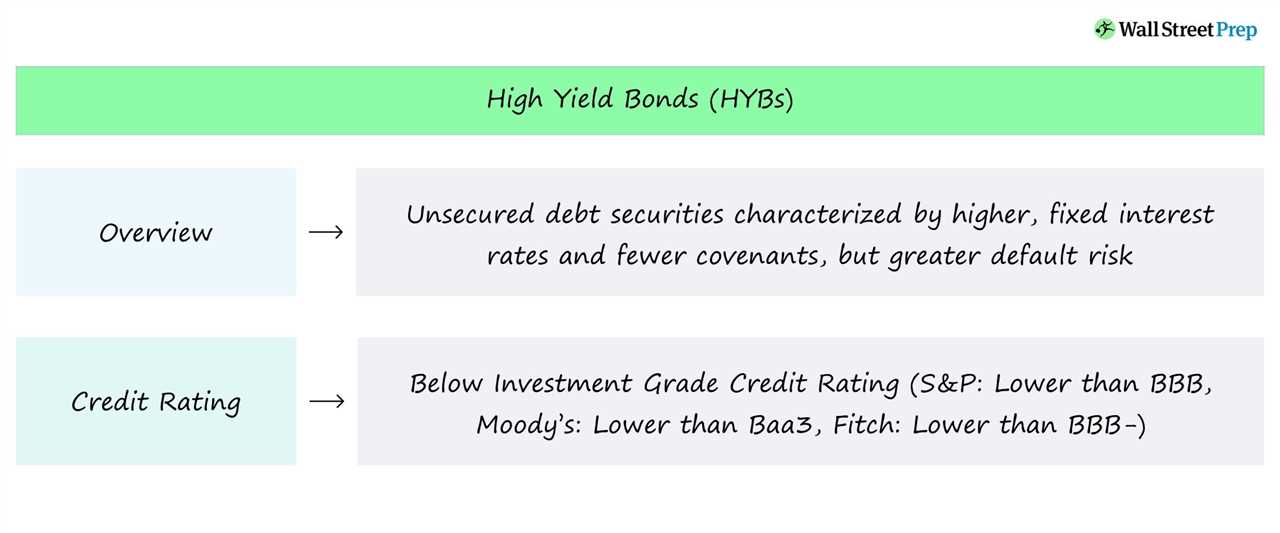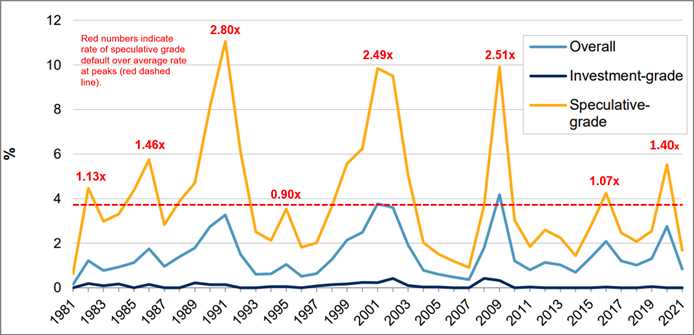Types of High-Yield Bonds

1. Corporate Bonds: Corporate bonds are issued by corporations to raise capital. These bonds offer higher yields compared to investment-grade bonds because they carry a higher risk of default. Investors who are comfortable with taking on more risk may find corporate bonds attractive.
3. Distressed Bonds: Distressed bonds are issued by companies that are in financial distress or have filed for bankruptcy. These bonds are considered high-risk investments but can offer substantial returns if the company successfully restructures its debt. Investors with a high-risk tolerance and the ability to conduct thorough research may find distressed bonds appealing.
4. Convertible Bonds: Convertible bonds are a hybrid type of bond that can be converted into a specified number of shares of the issuer’s common stock. These bonds offer the potential for capital appreciation if the stock price rises, while still providing the regular interest payments of a bond. Investors who believe in the growth potential of the issuer’s stock may find convertible bonds attractive.
5. High-Yield Municipal Bonds: High-yield municipal bonds are issued by state or local governments to fund public projects. These bonds offer higher yields compared to investment-grade municipal bonds due to their higher risk. Investors seeking tax-exempt income and willing to take on some risk may consider high-yield municipal bonds.
Benefits of High-Yield Bond Investing

Investing in high-yield bonds can offer several benefits to investors. Here are some key advantages:
2. Diversification: Including high-yield bonds in a diversified investment portfolio can help spread risk. High-yield bonds often have a low correlation with other asset classes, such as stocks and investment-grade bonds, which can provide diversification benefits.
4. Potential for Capital Appreciation: In addition to generating income, high-yield bonds also have the potential for capital appreciation. If the credit quality of the issuer improves or market conditions change, the value of high-yield bonds can increase, resulting in capital gains for investors.
5. Opportunity for Active Management: High-yield bonds can provide opportunities for active portfolio management. Skilled fund managers can analyze and select high-yield bonds that offer attractive risk-reward profiles, potentially enhancing returns for investors.
6. Access to Different Sectors: High-yield bonds are issued by companies across various sectors, including technology, healthcare, energy, and more. Investing in high-yield bonds allows investors to gain exposure to different industries and potentially benefit from sector-specific opportunities.
7. Potential for Higher Yields in a Low-Interest-Rate Environment: In a low-interest-rate environment, high-yield bonds can offer attractive yields compared to other fixed-income investments. This can be especially beneficial for income-focused investors who are seeking higher returns.
Overall, high-yield bond investing can be a valuable addition to an investment portfolio, providing the potential for higher returns, diversification, income generation, and opportunities for active management.

Emily Bibb simplifies finance through bestselling books and articles, bridging complex concepts for everyday understanding. Engaging audiences via social media, she shares insights for financial success. Active in seminars and philanthropy, Bibb aims to create a more financially informed society, driven by her passion for empowering others.
